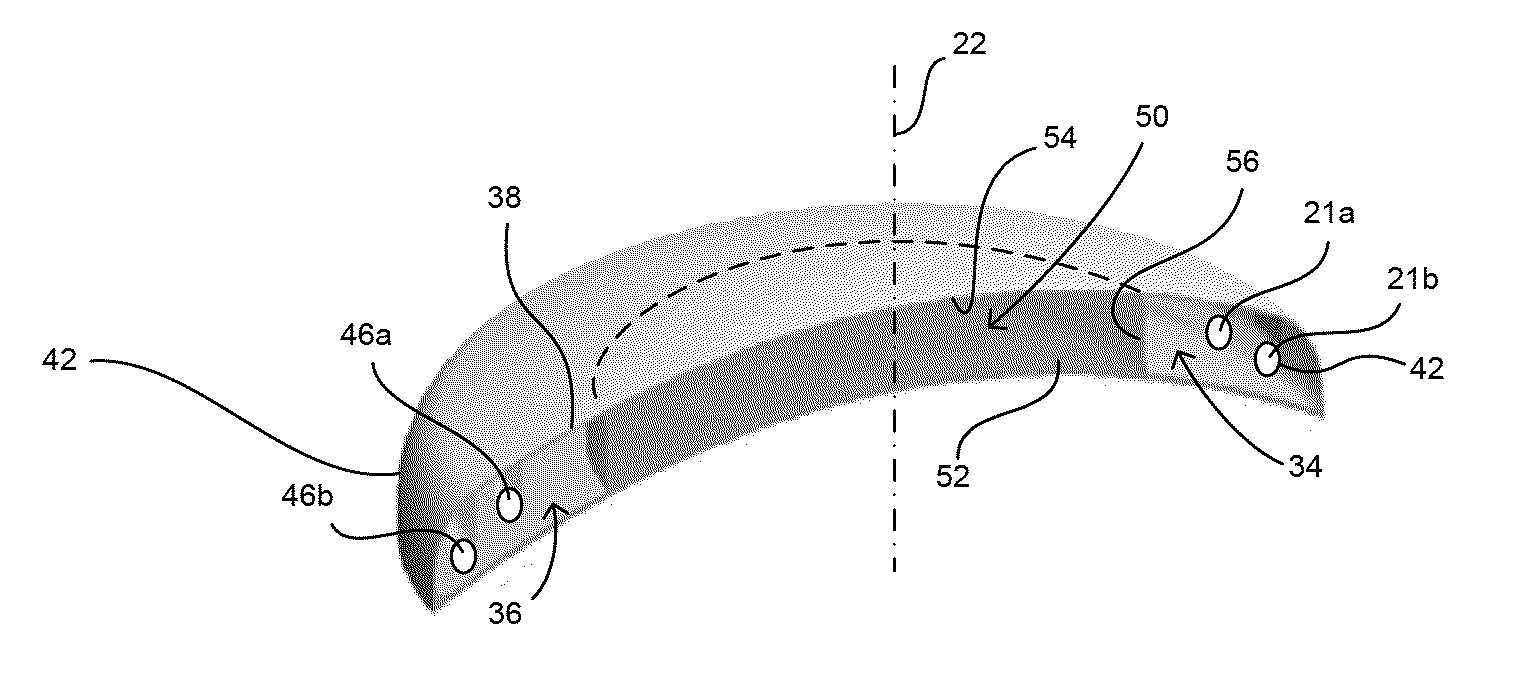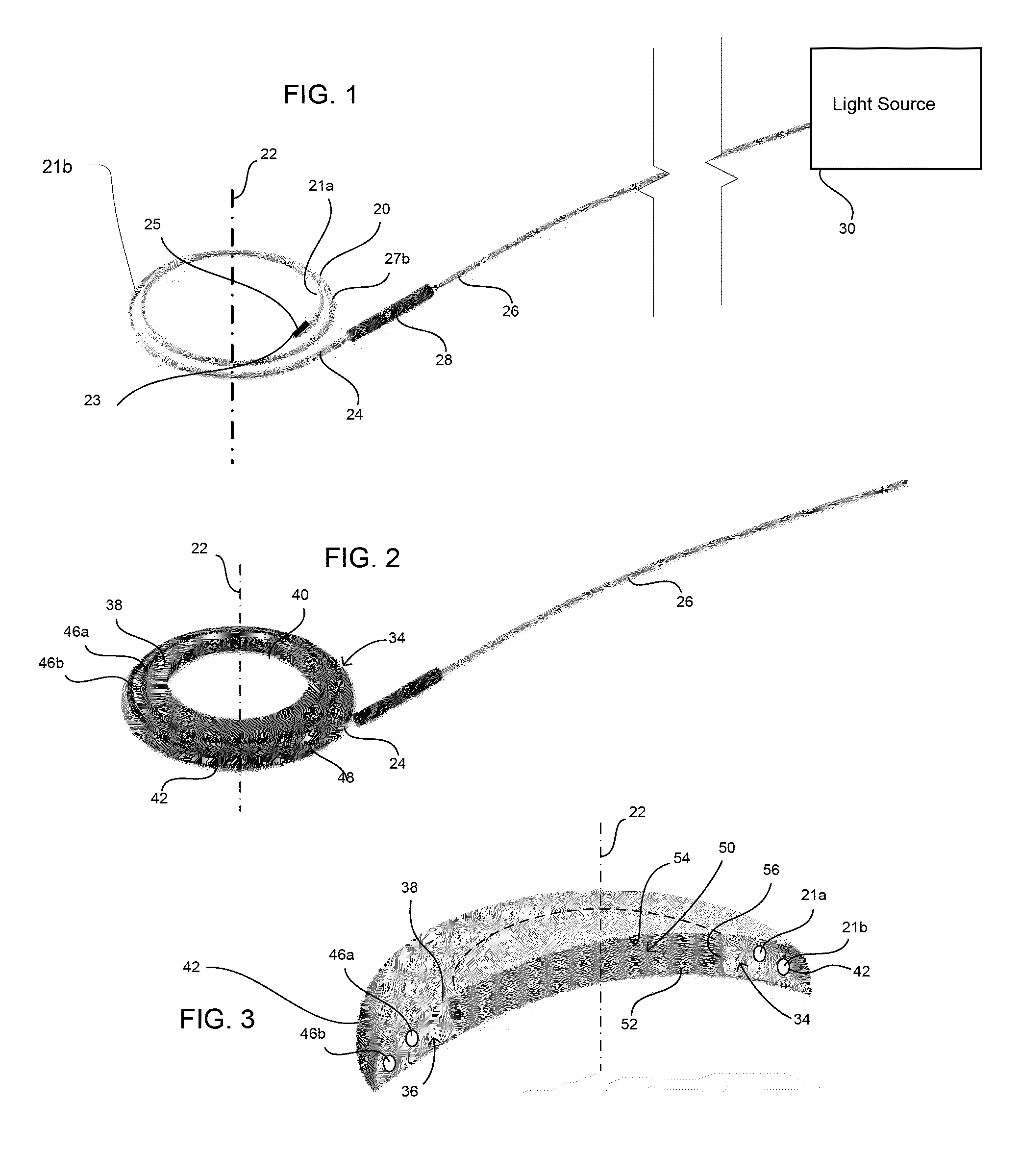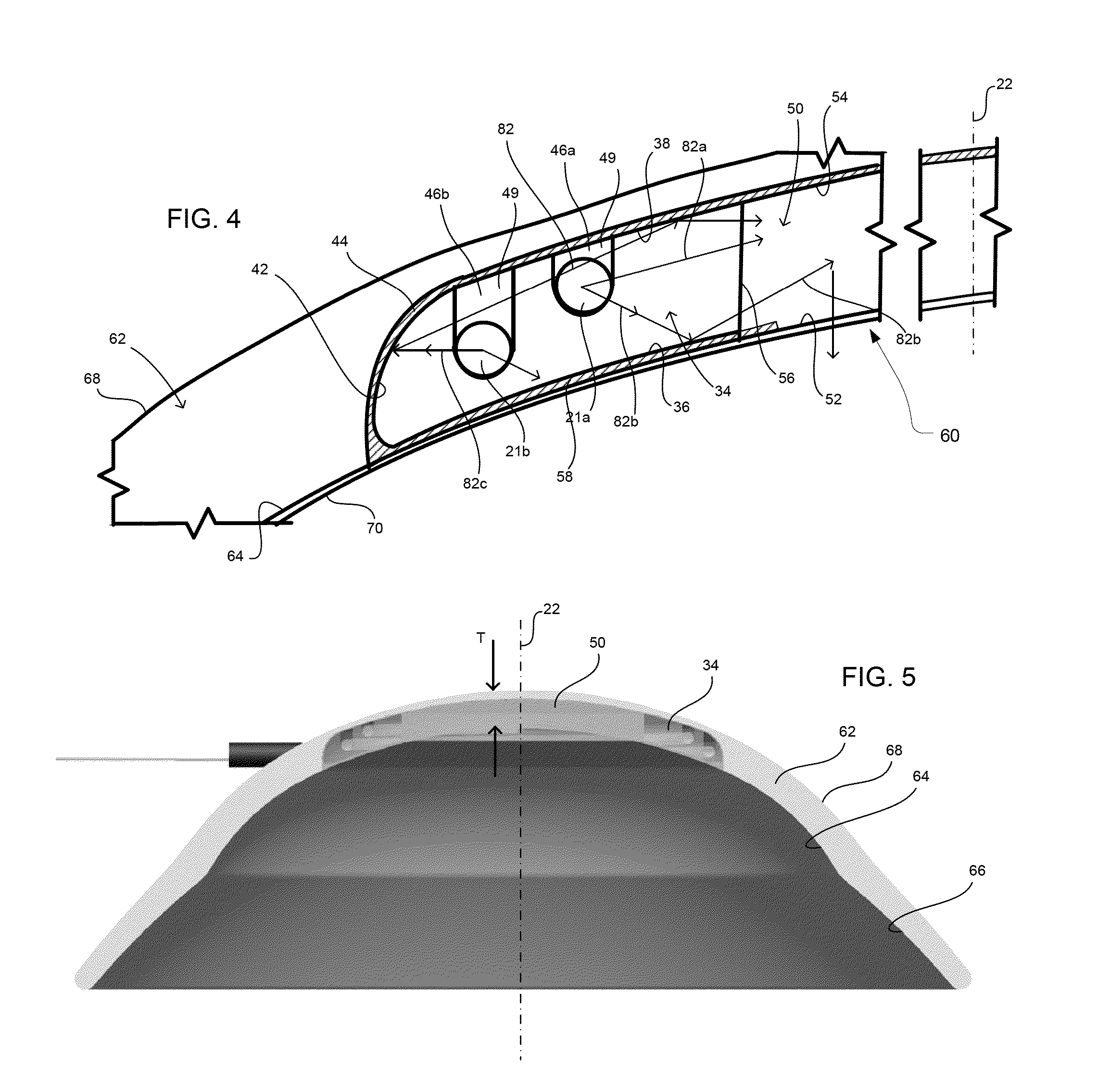Apparatus for phototherapy of the eye
a technology for eye and eye, applied in the field of eye apparatus for phototherapy, can solve the problems of eye damage, eye damage, eye damage, etc., and achieve the effects of enhancing comfort and practicality, effective phototherapy, and effective cross-linking
- Summary
- Abstract
- Description
- Claims
- Application Information
AI Technical Summary
Benefits of technology
Problems solved by technology
Method used
Image
Examples
Embodiment Construction
[0037]A device according to one embodiment of the invention incorporates a first optically dispersive element in the form of a radially dispersive optical fiber 20 (FIG. 1). As used in this disclosure, the term “optically dispersive element” refers to an element that is adapted to scatter light propagating in a direction of propagation so that an appreciable portion of such light is redirected in directions transverse to the direction of propagation. The term “radially dispersive optical fiber” refers to a fiber, such as fiber 20, which is adapted to allow propagation of light along the length of the fiber while also scattering an appreciable portion of the light propagating along the fiber in directions transverse to the length of the fiber.
[0038]The degree of dispersion in an optical fiber can be stated in terms of its “extinction length.” With respect to a fiber, the extinction length as referred to in this disclosure is the length along the direction of propagation in which ligh...
PUM
 Login to View More
Login to View More Abstract
Description
Claims
Application Information
 Login to View More
Login to View More - R&D
- Intellectual Property
- Life Sciences
- Materials
- Tech Scout
- Unparalleled Data Quality
- Higher Quality Content
- 60% Fewer Hallucinations
Browse by: Latest US Patents, China's latest patents, Technical Efficacy Thesaurus, Application Domain, Technology Topic, Popular Technical Reports.
© 2025 PatSnap. All rights reserved.Legal|Privacy policy|Modern Slavery Act Transparency Statement|Sitemap|About US| Contact US: help@patsnap.com



